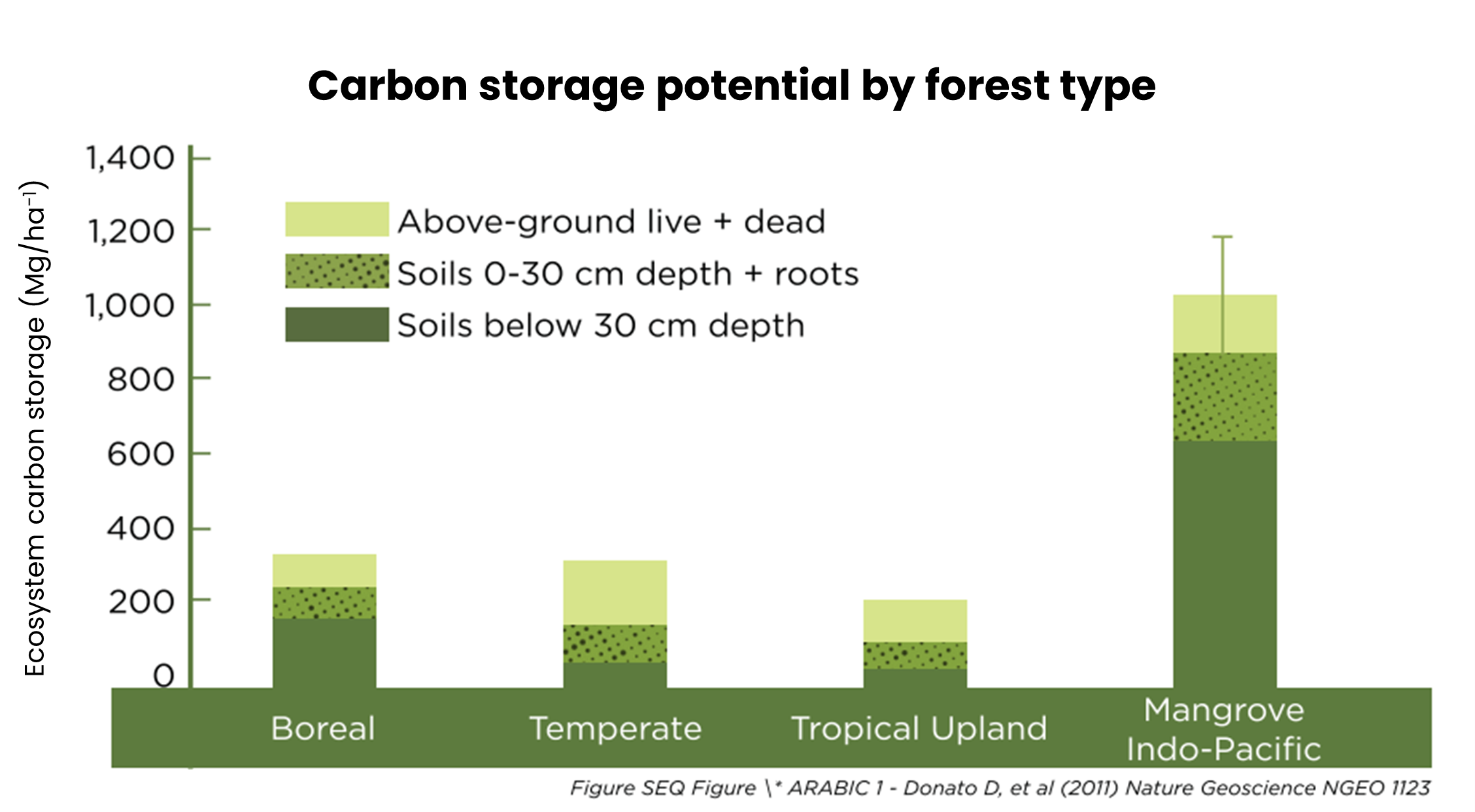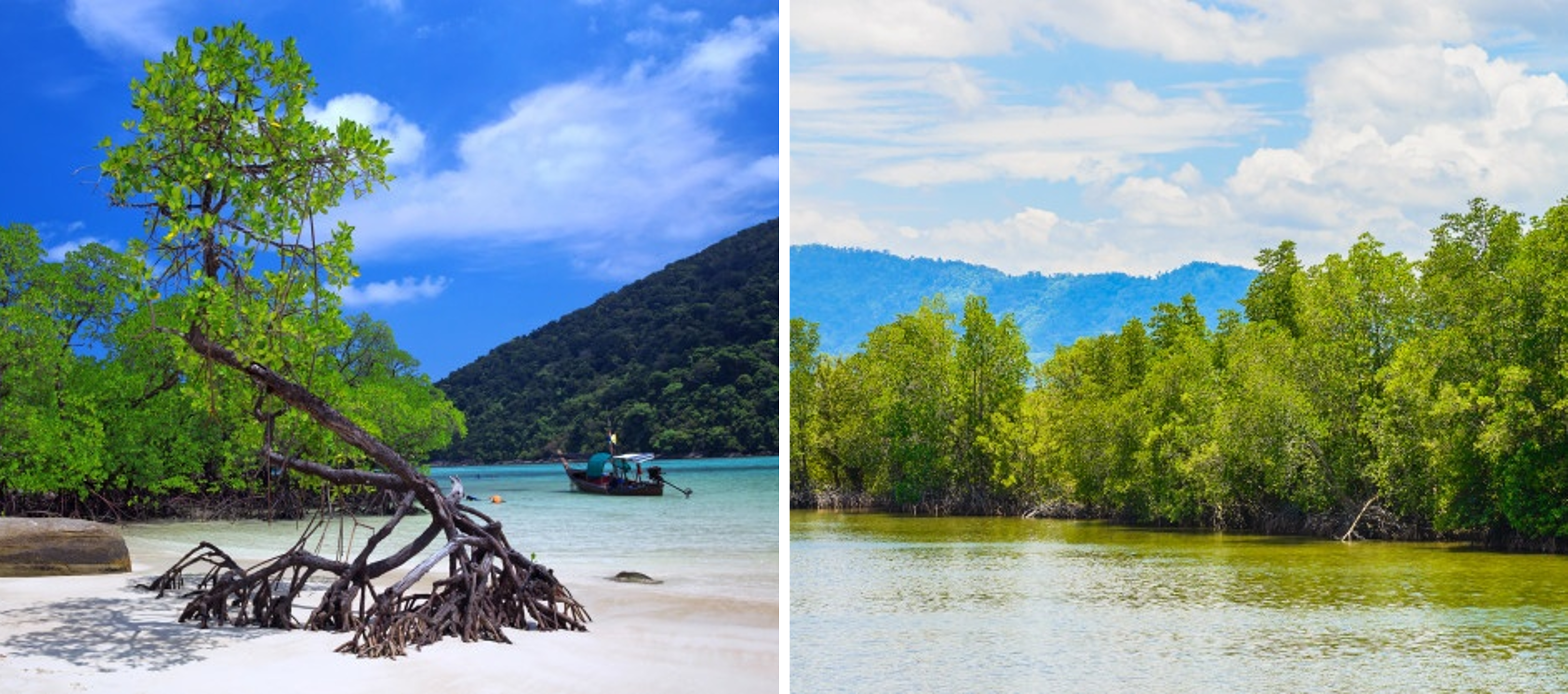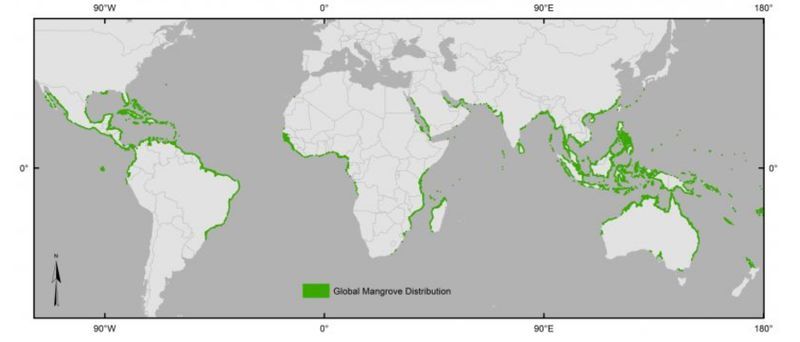The Magic of Mangroves
Selva
4 min read
Share
Making mangroves mainstream
The Forbidden Forest of Hogwarts or the Fangorn Forest of Middle Earth have nothing on the magic of the world’s mangrove forests. They may be dark, smelly, and swampy, but these unsung heroes that line tropical coastlines from Malaysia to Mexico are a natural miracle and a key ally in our efforts against climate change. Why don’t they get the attention they deserve? We don’t know, but here at Selva we’re superfans on we’re on a mission to recognition.
How do mangroves prevent climate change?
Put simply, they are turbocharged carbon absorption machines
Mangroves have an insatiable appetite for carbon. They like eating the stuff more than any other species of trees and scientific research has shown that per hectare carbon sequestration in mangrove forests is 4x as much as any forests on land. This superpower of theirs is mainly down to their intricate root system that anchors them into the marshy soil.
The complex tangle of roots capture debris like branches, leaves and sediment that float in the seawater and lock it into the muddy soil for hundreds of years rather than it decaying into the atmosphere. When talking about mangroves in the context of CO2, you may hear them referred to as “blue carbon” ecosystems, a nod to their watery habitat along coastlines.
The importance of mangroves in our fight against carbon was highlighted in a detailed scientific study in 2018 which showed that even the current depleted mangrove forests around the world store ~6.4 billion tonnes of carbon in their biomass and soils – the equivalent of roughly two thirds of global annual carbon emissions. This emphasises the importance of protecting existing mangrove forests from being destroyed, to ensure that carbon remains trapped, as well as reforesting already degraded ones.

The foundation of vibrant ecosystems
The nutrient-rich and sheltered waters of mangrove forests provide the perfect habitat for thriving ecosystems. Below the surface of the water, all manner of marine life from crabs to manatees and sharks thrive in the ideal breeding and hunting ground created by the mangroves.
This keeps local fisherman happy too, who reap the benefits of large fish stocks in these waters, providing livelihoods for entire coastal communities. It is estimated that over 4 million small scale fisherman globally rely on the waters of mangrove forests for food and income. These communities are therefore heavily incentivised to protect their mangrove forests rather than cut them down for firewood.
Above the water there is a whole other vibrant ecosystem, with the mangroves providing homes for a giant menagerie including eagles, monkeys and tigers.
Mangroves, which can range in size from 2-10 metres, are unique in their ability to thrive in saltwater. Their web of roots helps to filter out freshwater from the saltwater and the tree then excretes any excess salt through its waxy leaves. It’s like a naturally built-in water purification system. And, because they live in this quasi maritime environment, there’s an added bonus that the risk of forest fires is extremely low.

Great green walls
In case all of that wasn’t enough, mangroves have been shown to protect coastal communities against storm surges, rising tides and cyclones, literally acting as a physical barrier between the sea and the people who live on land. Meanwhile, their dense roots also serve to hold the soil in place and prevent coastal erosion.
During the tragic 2004 tsunami in Asia, mangroves are said to have saved significant numbers of lives and livelihoods by acting as a shield that absorbed the energy of the water. With sea levels rising, and the increasing regularity of extreme weather events, this characteristic of mangroves will become more and more important for those who are protected by them.
Outlook for mangroves
Despite the myriad of valuable benefits provided by mangroves, they are under threat all around the world. Estimates suggest that 67% of mangrove forests have been lost over the last 100 years mainly due to coastal development, shrimp farming and fuel for fire. The vital role that mangroves have in protecting the environment and local communities is becoming more widely acknowledged and thankfully efforts are underway by the UN, the World Wildlife Fund and others to restore these precious ecosystems.
Mangroves do their best to spread their own coverage. Their seeds (known as propagules), drop into the water, float away, and can travel hundreds of miles before finding a place to settle in and grow. Mangroves prefer warmer temperatures, so as global temperatures rise, suitable conditions in which mangroves can grow are stretching further and further north, enabling greater expansion of these awesome plants.
In case you wondering or are a bit of botanist nerd, there are 3 different types of mangrove trees: red mangroves (aka rhizophora mangle), white mangroves (laguncularia racemosa) and black mangroves (avicennia germinans).

Our mangroves in Madagascar
All of Selva’s mangroves are planted in the beautiful and ecologically bountiful country of Madagascar with the help of our amazing partner, Eden Reforestation. Sadly, 90% of Madagascar’s forests have been lost over the years but, on the bright side, this leaves huge amounts of potential for reforestation.
The land is there, we just need the financial support to restore it. Eden has been on the ground in Madagascar since 2007 and has so far planted an eye-watering 500 million trees on the island! With the help of the Selva community they have plans to plant hundreds of millions more.
What we’re trying to say is
Mangroves are a hugely important natural ecosystem, not just for reducing CO2 but also for providing livelihoods and protection for some of the world's poorest and most vulnerable communities. At Selva we are striving to tap into this potential and unleash the magic of mangroves by planting thousands every month.
Join us in planting these carbon hungry climate heroes by signing up to Selva today.
Sources:
https://www.sciencedaily.com/releases/2011/04/110404173247.htm
https://www.nature.com/articles/ngeo1123
https://www.sciencedirect.com/science/article/abs/pii/S027277142030706X?via%3Dihub
https://www.pnas.org/content/106/18/7357
https://oceanconference.un.org/commitments/?id=14787
https://iopscience.iop.org/article/10.1088/1748-9326/aabe1c/meta
